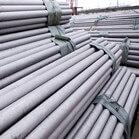
What’s the different between 316L and 316H material
316L and 316H are both variants of the 316 stainless steel grade, but they have different properties and applications due to differences in their chemical composition and processing.
316L is a low carbon variant of 316 stainless steel. It has a maximum carbon content of 0.03%, which makes it more resistant to sensitization and intergranular corrosion when exposed to high temperatures than higher carbon grades of stainless steel. This makes 316L ideal for use in applications where welding or other high-temperature processes are involved. It is commonly used in the chemical and petrochemical industries, as well as in food processing, pharmaceuticals, and medical equipment.
316H, on the other hand, is a high carbon variant of 316 stainless steel. It has a maximum carbon content of 0.10%, which makes it stronger and more durable than 316L. It is primarily used in high-temperature applications, such as in furnace parts, heat exchangers, and boiler tubes. The higher carbon content of 316H, however, makes it more susceptible to sensitization and intergranular corrosion in certain environments, such as those containing sulfuric acid, so it is generally not recommended for use in these conditions.
Overall, 316L and 316H have different properties and applications, and the choice between them will depend on the specific requirements of the application, such as temperature, corrosion resistance, and strength.
The chemical composition of 316L stainless steel typically includes the following elements:
– Carbon (C): 0.03% max
– Chromium (Cr): 16.0-18.0%
– Nickel (Ni): 10.0-14.0%
– Manganese (Mn): 2.0% max
– Silicon (Si): 1.0% max
– Phosphorus (P): 0.045% max
– Sulfur (S): 0.03% max
In addition to these base elements, 316L may also contain small amounts of other elements, such as molybdenum (Mo), titanium (Ti), and copper (Cu), depending on the specific manufacturer and the intended application.
The low carbon content of 316L makes it more resistant to sensitization and intergranular corrosion than higher carbon grades of stainless steel, which can occur when the material is exposed to high temperatures. This makes it well-suited for use in applications involving welding and other high-temperature processes, such as in the chemical and petrochemical industries, food processing, pharmaceuticals, and medical equipment.
The chemical composition of 316H stainless steel typically includes the following elements:
– Carbon (C): 0.04-0.10%
– Chromium (Cr): 16.0-18.0%
– Nickel (Ni): 10.0-14.0%
– Manganese (Mn): 2.0% max
– Silicon (Si): 1.0% max
– Phosphorus (P): 0.045% max
– Sulfur (S): 0.03% max
In addition to these base elements, 316H may also contain small amounts of other elements, such as molybdenum (Mo), titanium (Ti), and copper (Cu), depending on the specific manufacturer and the intended application.
The higher carbon content of 316H compared to 316L makes it stronger and more durable, but also more susceptible to sensitization and intergranular corrosion in certain environments, such as those containing sulfuric acid. This makes it primarily used in high-temperature applications, such as in furnace parts, heat exchangers, and boiler tubes. However, it is generally not recommended for use in some corrosive environments, such as those containing high levels of chloride ions, due to its reduced corrosion resistance compared to 316L.

